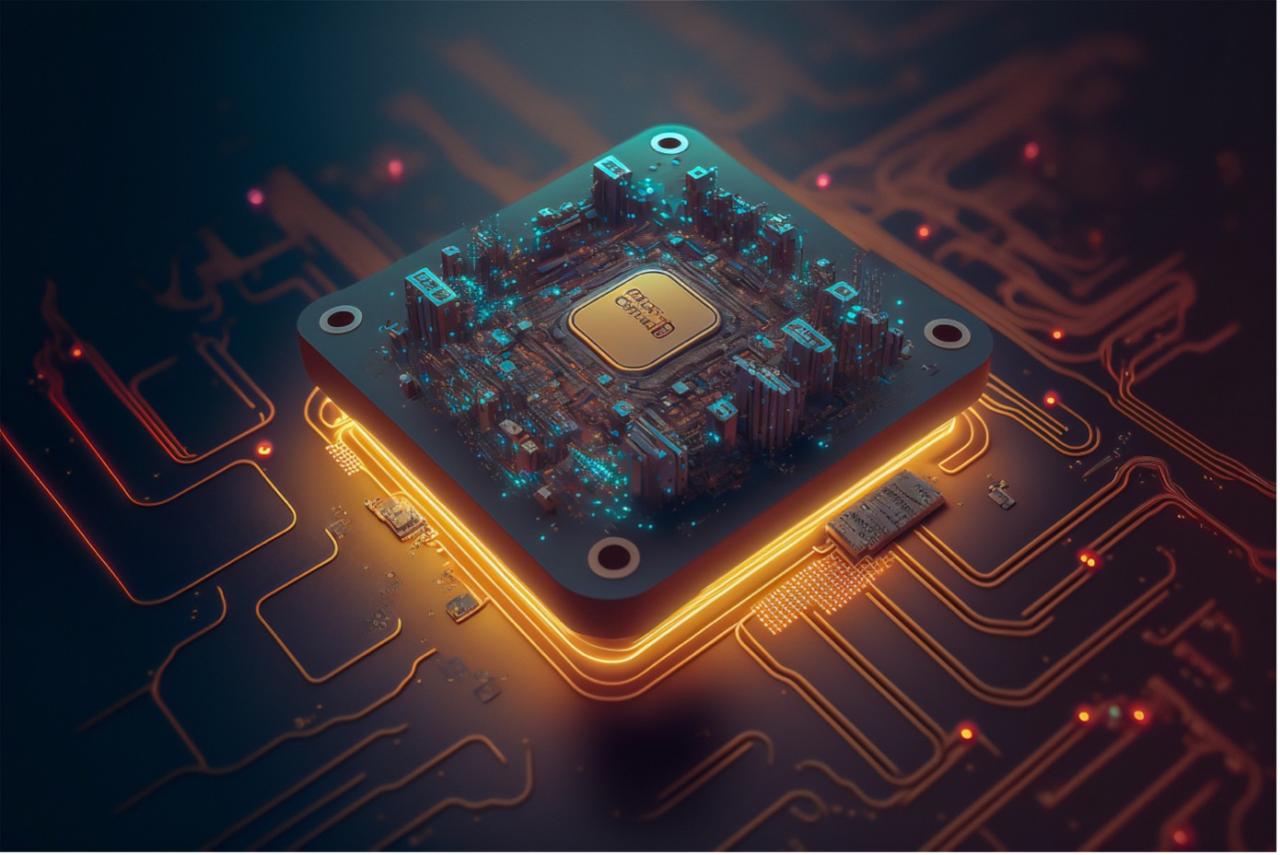IoT revolution for established businesses: How to bring your legacy systems into the future
- The problem with legacy systems
- Compatibility
- Security
- Data integration
- PerformanceLegacy system transformation - from initial analysis to go-live
- Initial analysis and potential
- Planning and Implementation
- Scalability
- Security
- Compatibility
- Data integration
- Interoperability
- Evaluation and optimization
- Partners and Expertise
- Conclusion
Many established medium-sized companies have a lot of catching up to do when it comes to digitalization their systems. In this context, the challenge often arises, especially in the industrial sector, to network existing plants and systems that were not originally designed for this purpose. This article aims to illustrate the opportunities offered by the integration of IIoT into such legacy systems and how it can be implemented.
In today's digitalized world, the Internet of Things (IoT) offers a wealth of opportunities for businesses to operate more efficiently, competitively and innovatively. But what happens if your existing assets, hardware or software systems were developed at a time when the Internet of Things was still a long way off? Do you need to redesign your entire infrastructure from the ground up to avoid missing the boat to the future?
The answer is no. Integrating IoT into existing infrastructures is possible and can pave the way for digital transformation. However, it is not an easy task and there are numerous hurdles to overcome. In this article, we will take a closer look at these opportunities and challenges related to integrating the Industrial Internet of Things (IIoT) into existing systems. We will show how to realize the full potential of this integration while ensuring that you avoid potential complications in the future.

The problem with legacy systems
Legacy systems are software and hardware systems that are technically obsolete or no longer state-of-the-art, but are still used in a company's day-to-day business. "Legacy" means that the respective systems are usually no longer actively developed further by the original manufacturer. We would like to outline why these legacy systems are still often in use today using a theoretical example:
An industrial manufacturer of drilling machines produces in a factory facility whose central machines have been in use for many years. Since its production has specialized requirements, the hardware and software used was custom-built for the company. The production systems met the standards of the time, but are now outdated, so the manufacturer spends more money each year to maintain its hardware and software. Newer applications, from other sectors of the business, cannot communicate with the legacy systems to exchange data, and modern security requirements are also met insufficiently, or at disproportionately greater expense.
The manufacturer is aware of this problem, but has so far decided against updating the basic hardware and software systems of the production plant. This has to do with the fact that a fundamental change of the legacy systems is associated with a number of special challenges. We have summarized the most important of these in overview form in the following chapter.
Where are the greatest challenges in the changeover?
Particularly because systems that have been in place for longer were generally not designed for the digitalization process, numerous problems can arise that need to be overcome, depending on the individual circumstances and requirements.
This includes:
- Compatibility:
Bridging the compatibility gap of older systems is no easy task, because in many cases proprietary protocols and interfaces are used here that do not fit together with modern IoT standards. To enable seamless communication nonetheless, additional components of hardware or software are needed in many cases.
- Security:
Security is a key aspect of IoT integration, especially in existing infrastructures that were often not designed with digital networking in mind. This can lead to significant security gaps. Preventing this and avoiding dangerous cyberattacks therefore requires a consistent security strategy for vulnerable systems and regular updates to software.
- Data integration:
How is data currently captured, stored and processed? If existing systems are not designed for digitalization, let alone IoT integration, significant hurdles can arise here. These include the existence of different file formats and the lack of controllability of legacy systems.
- Performance:
Like data integration, performance scalability is also an issue, as older hardware may be overloaded by the increased data load and resulting changes in processing requirements.
These challenges, and concerns about fundamental structural changes, are some of the key reasons why many established companies, such as the drill press manufacturer in the example outlined, continue to operate their legacy systems in their original form. Despite these challenges, companies should not be discouraged: With careful planning and a tailored initial analysis by experienced experts, any barriers to a digital transformation of legacy systems can be overcome. Especially the integration of IoT into existing infrastructures offers significant advantages, such as more transparency through comprehensive process data and easier maintenance & adaptation due to the flexible IoT architecture.
The following sections explain the process of transforming legacy systems in more detail and show how it can be successfully implemented.

Transformation of legacy systems - from initial analysis to commissioning
In this chapter, we explain in detail the individual steps required for the professional integration of the Industrial Internet of Things into existing legacy systems and thus provide a guide for the successful implementation of the transformation in your company.
Initial analysis and potential
Before diving into the IoT world, a thorough analysis of your existing infrastructure is essential. This analysis should be comprehensive and answer the following questions, among others:
How has information been collected to date?
Understand how data has been collected in your legacy systems to date and used for their internal structures. Analyze the potential if the current data silos are linked and replaced by a higher-level, central structure.
Can inventory data be transferred?
Identify valuable data that can be reused for the IoT project. Ensure that the data packages are available in the format that will be needed after the migration.
Are the processes used so far efficient?
Analyze all recurring work processes related to your legacy systems. Gather information on which problems limit the optimal functioning of these processes and which individual steps take the most time.
Which elements can be automated?
Locate those tasks and processes in your company that would benefit most from centralized data collection and analysis and where the changeover is also technically feasible. Also try to perform the analysis at interfaces between work areas and departments in order to integrate synergy effects.
Which costs will be reduced by the changeover?
Evaluate holistically which costs are associated with which processes and how decentralized data silos and delayed, manual troubleshooting currently increase the additional financial effort. Through this evaluation and an informed forecast, you can identify the sectors where digital transformation will bring the greatest increase in effectiveness to your legacy systems and enable the fastest ROI.
This inventory lays the foundation for the entire transformation process and enables clear identification of opportunities and challenges. Only on this basis can recommendations for action subsequently be made for planning and implementation.
Planung and Implementation
Following the analysis of the status quo, all the information gathered is next used to create a well-founded plan concept that determines how to proceed. In order to exploit the full potential of the digital transformation, all factors that could potentially hinder the upgrade of legacy systems must be considered during this step and solutions must be developed for the specific individual case.
These factors include:
Scalability:
In order to avoid overloading the legacy systems with the data load, which is usually considerably higher after integration into the IoT, it must be determined in advance whether it is necessary to upgrade individual hardware. This is the only way to ensure that the influx of real-time data generated by IoT devices can be handled later.
Security:
Cyberattacks and other threats from security gaps after IoT integration can be avoided by not neglecting to continuously update them, in addition to secure interface protocols. Comprehensive, customized security solutions such as KontronOS further protect systems by ensuring that they cannot be modified from the outside.
Compatibility:
Bridging legacy system compatibility issues requires a detailed infrastructure assessment of potential compatibility issues and a holistic integration strategy. Middleware tools and technologies facilitate seamless data exchange and communication between the legacy system and the new environment, ensuring smooth interconnectivity.
Data integration:
It is important for data integration that all data from different sources converge in a central software solution with a structured database. For example, MES or control systems are used for this purpose, but cloud platforms can also be used as a target system for structured data collection.
Interoperability:
The proactive implementation of gateways to optimize communications, as well as the use of standardized interfaces, will ensure that there is no need to compromise on the interoperability of legacy systems even after the changeover.
After developing professional solution models for these potentially arising challenges and technical bottlenecks, the practical implementation of the upgrade project is realized. For a holistic perspective, it is advisable to turn to a project partner with experience in both the hardware and software sides of the IoT transformation.
Evaluation and Optimization
The preparation and initial setup have been completed and the new hardware and software systems have been installed. Especially for high-risk applications, such as in the pharmaceutical industry, it is now recommended to implement so-called product lifecycle management (PLM) software as a powerful control system. Through this, the product lifecycle can be continuously evaluated, assessed and, if necessary, adjusted in order to reliably achieve the previously set project goals.
But how can this be achieved? Through the synergetic interaction of the products KBox A-250 and FabEagle®Connect combined with FabEagle®Monitoring, kontron susietec® has created a holistic solution for the evaluation of the digital transformation of existing plants. You can read how this has already been successfully implemented in this use case.
Partner with Expertise
The structured implementation of all these steps requires the cooperation of IoT experts or personnel trained in this sector, which many companies still lack - especially when the switch to the IoT is just around the corner. A strong partner like kontron susietec®, who not only has extensive expertise but also has many years of experience in integrating IoT solutions into existing infrastructures, is therefore the most important component of the project.

Conclusion: Into the future with the right IIoT solutions
In a world where digitalization is advancing unstoppably, integrating IoT into existing systems is no longer an option, but a necessity. Based on this blog post, you could gain an overview of the most important points when integrating IoT into legacy systems.
At the beginning, there is always the complete initial analysis, in which the potential of the respective upgrade project is presented. Only through this evaluation does it become visible which active and passive costs your legacy systems have caused so far - and which opportunities and possibilities the upgrade offers you.
The key to success, however, as has been shown, lies in the creation of a convincing and holistic plan concept, based on this data, for the professional implementation.
Especially when overcoming essential challenges such as ensuring system security, ongoing compatibility and flawless data integration, it became clear that a strong partner is essential to make the journey to digitalization a success.
The final transformation stage, evaluation, continues on an ongoing basis after integration and allows you to take granular next steps to further optimize your infrastructure based on valuable new data sets.
Digital transformation waits for no one - but fortunately, IoT integration into existing systems is a solvable challenge if the right minds are involved and a systematic approach is taken.
Are you ready for the digital evolution? kontron susietec® is your reliable, experienced partner for the integration of IoT into existing infrastructures. With our many years of expertise and a team of IoT specialists, we are at your side to make your vision a reality.
Contact us today to discuss the potential of your project and take full advantage of the many benefits of IoT. Together, we'll shape the future of your business.
Learn more ab out our IoT Solutions





